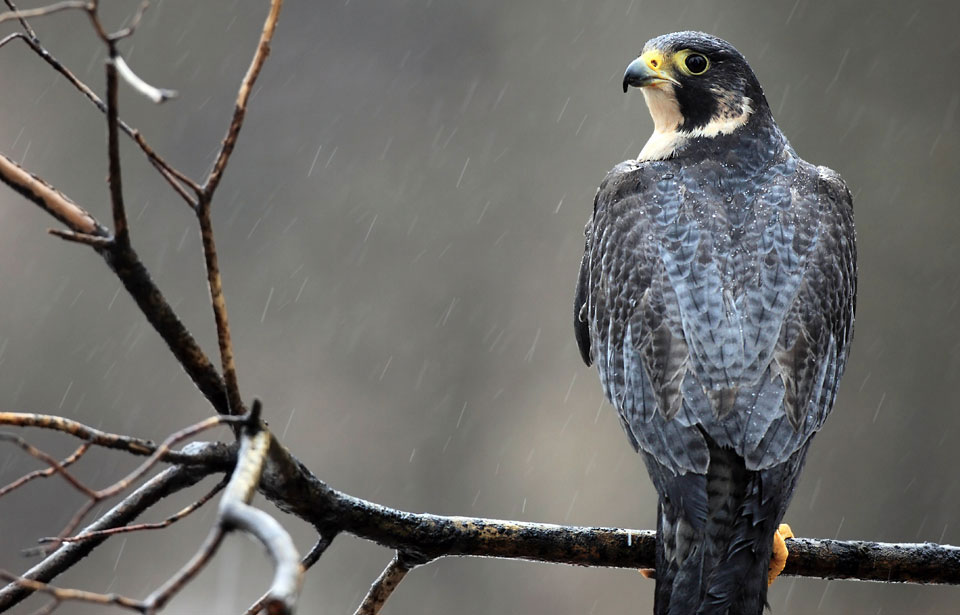North America’s largest hawk can no longer be found in many parts of the Prairies, where it was once common. This grassland-loving bird disappeared completely from Manitoba. But, with help, the ferruginous hawk is slowly returning to the southwestern corner of the province. Nowadays, its main population is found in Saskatchewan and Alberta. This ravenous raptor is a great help to landowners. A breeding pair and their young can gulp down almost 500 ground squirrels in a single nesting season.
All three Prairie provinces have programs to protect this handsome hawk. Artificial nesting structures have been successful, and cotton-wood trees planted in just the right
isolated spots have attracted breeding ferruginous and other hawk species. Landowners are being encouraged to put fences around likely hawk trees to prevent damage from cattle.
You can help the ferruginous hawk by planting cottonwood trees or putting up a nesting platform. Contact a provincial wildlife biologist for project supervision and a detailed platform design. Here are a few tips:
- Locate platforms in secluded spots. (Hawks are easily disturbed.)
- Space them at least 1.2 km apart to prevent disagreements between hawk neighbours.
- Locate platforms near a good food supply of ground squirrels.
- Check with power companies for possible donations of used poles to support the platforms.
- Use materials such as twigs, sage clumps, branches, and sun-dried cow pats to make a bottom layer for the nest. Hawks will add new materials to the nest each year.
- Planting cottonwoods will attract many species, so don’t despair if a ferruginous hawk doesn’t take up residence.
- Check platforms in spring and fall for any signs of damage.



